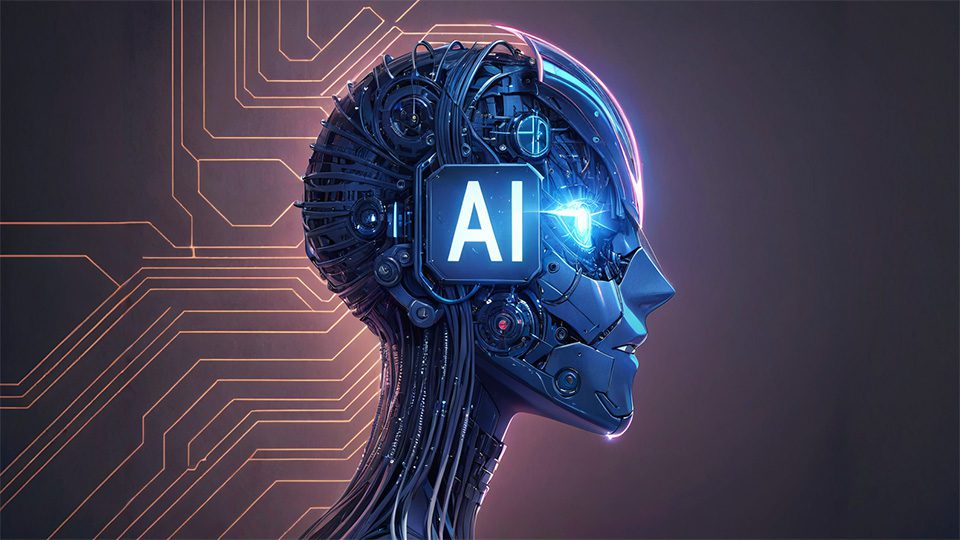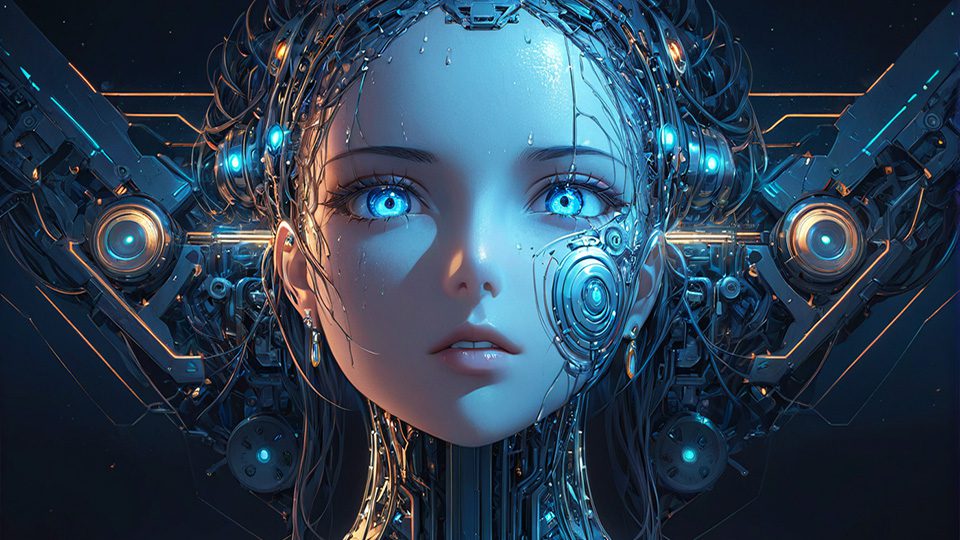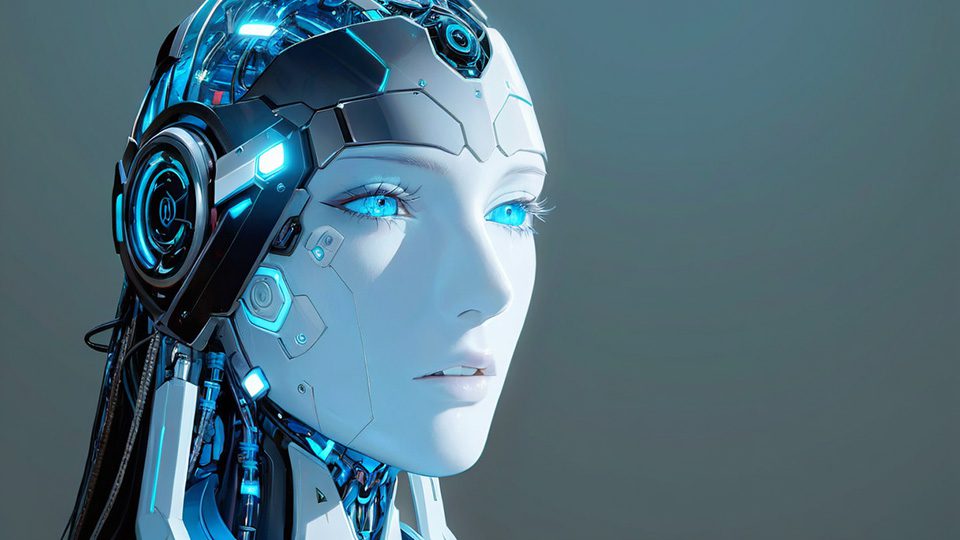

In the realm of technological evolution and AI evolution, we find ourselves at a juncture where artificial intelligence (AI) transcends its former role as a mere household appliance, emerging instead as a transformative force reshaping the very foundations of our existence. Gone are the days when computer software was confined to performing menial tasks or executing preset commands; today, its capabilities extend far beyond the confines of our imagination.
As we navigate this brave new world, we are called upon to confront the myriad challenges and complexities that accompany the rise of artificial intelligence. No longer confined to the realm of speculation, the consequences of our inventions are tangible and far-reaching, touching every aspect of our lives.

What was once shrouded in mystery “the enigma of intelligence itself” has been laid bare before the relentless march of technological progress. AI has unraveled the secrets of cognition, dissecting the intricate mechanisms underlying human thought and behavior with unprecedented clarity. Through sophisticated algorithms and neural networks, the once elusive essence of intelligence has been demystified, its inner workings rendered tangible and comprehensible.
But how this happened and how the World has been changed in a such as so deep way? Let’s analyze the steps of the AI evolution.
This phase dates back to the 1950s and 1960s can be considered the first step in the AI evolution, the dawn of the artificial intelligence. AI systems were built on symbolic manipulation and logical reasoning. These systems consisted of predetermined rules that guided the AI to perform basic tasks. However, this approach had limitations as the systems lacked the ability to learn or adapt outside the predetermined rules. Despite these limitations, rule-based systems laid the foundation for future advancements in AI.
This phase started gaining prominence in the late 20th century and continues to evolve. Machine Learning (ML) emerged as a prominent field in the late 20th century and has since experienced continuous evolution. ML algorithms empower systems to discern patterns and formulate predictions based on data. Major paradigms within ML encompass supervised learning, unsupervised learning, and reinforcement learning. Examples of ML techniques span a wide spectrum, including decision trees, support vector machines, and neural networks.

Deep learning is a subset of machine learning, represents a pivotal advancement in artificial intelligence. Particularly with its emphasis on neural networks characterized by multiple layers—hence the term “deep” neural networks. This approach garnered substantial attention and momentum in the early 21st century, primarily fueled by the emergence of potent hardware capabilities, notably Graphics Processing Units (GPUs), and the availability of vast datasets for training.
The prowess of deep learning manifests vividly across a spectrum of challenging tasks, showcasing its remarkable performance in realms such as image recognition, natural language processing (NLP), and speech recognition. In image recognition, deep learning algorithms have achieved unprecedented accuracy levels, surpassing human capabilities in tasks like object detection and classification. Similarly, in NLP, deep learning models have revolutionized language understanding and generation, enabling machines to comprehend context, sentiment, and semantics with remarkable fidelity. Moreover, in speech recognition, deep learning techniques have facilitated significant improvements in speech-to-text systems, making voice interfaces and dictation tools increasingly seamless and accurate.
At the heart of deep learning lie sophisticated architectures tailored to specific domains and tasks. Convolutional Neural Networks (CNNs), renowned for their efficacy in processing grid-structured data like images, employ convolutional layers to extract hierarchical features, thereby excelling in tasks such as image classification and object detection. Recurrent Neural Networks (RNNs), on the other hand, are adept at handling sequential data, making them indispensable for tasks like language modeling, machine translation, and time-series prediction. Meanwhile, Transformers, a relatively newer architecture, have emerged as a cornerstone in NLP, offering unparalleled performance in tasks such as language translation, text summarization, and sentiment analysis through their attention mechanisms and self-attention layers.
The emergence of neurosymbolic AI signifies a pivotal convergence between symbolic reasoning and neural networks. This approach marks a significant leap forward in the quest for more robust and versatile artificial intelligence systems. This interdisciplinary field seeks to synergize the strengths of both symbolic and connectionist paradigms, aiming to endow AI systems with a dual capability: the capacity to learn from vast volumes of data while also posse
One of the primary motivations behind neurosymbolic AI is to enhance the interpretability of AI models and the transparency of their decision-making processes. While deep learning models have demonstrated remarkable performance in a myriad of tasks, their inner workings often remain opaque and difficult to interpret, raising concerns about trust, accountability, and bias. Neurosymbolic approaches offer a pathway towards more explainable AI systems by incorporating symbolic reasoning mechanisms that facilitate human-understandable explanations for the model’s predictions and decisions.ssing the ability to engage in logical, symbolic reasoning.

Moreover, neurosymbolic AI aims to augment the reasoning capabilities of AI systems beyond pattern recognition and statistical inference. By integrating symbolic reasoning techniques such as logic-based inference and knowledge representation into neural architectures, these systems can exhibit a higher level of cognitive flexibility and adaptability, enabling them to tackle complex, real-world problems that require abstract reasoning, planning, and decision-making.
In essence, neurosymbolic AI represents a holistic approach towards artificial intelligence, bridging the gap between data-driven learning and symbolic reasoning. By leveraging the complementary strengths of both paradigms, neurosymbolic AI holds the promise of unlocking new frontiers in AI research and applications, paving the way towards more interpretable, reasoning-enabled AI systems that can tackle the myriad challenges of the modern world with greater efficacy and intelligence.
Generative AI stands at the forefront of innovation, heralding a new era where artificial intelligence transcends mere pattern recognition to become a creative force in its own right. At its essence, generative AI empowers systems to unleash their imaginative prowess by crafting original content across diverse domains, including images, text, music, and beyond. It’s interesting even this article about the rapid explosion of the generative AI and the implications of the AI in the production process.
Central to the advancements in generative AI are sophisticated models such as Generative Adversarial Networks (GANs), Variational Autoencoders (VAEs), and an array of other ingenious architectures. These models harness the power of neural networks to simulate the creative process enabling them to generate content that possesses striking realism and fidelity. GANs, in particular, have garnered widespread acclaim for their ability to generate compelling images, leveraging a dynamic interplay between a generator network tasked with creating synthetic content and a discriminator network trained to distinguish between real and generated samples. Meanwhile, VAEs adopt a probabilistic approach to latent space representation, allowing for the generation of diverse and coherent content while preserving underlying structure and semantics.
The advent of generative AI marks a paradigm shift in the capabilities of artificial intelligence, transcending its traditional role as a passive observer of patterns to become an active creator and innovator. No longer confined to replicating existing data, AI systems now possess the ability to explore uncharted territories of creativity, generating novel content that pushes the boundaries of human imagination.
Moreover, generative AI holds immense potential across a multitude of domains, offering transformative possibilities in fields ranging from entertainment and design to medicine and scientific discovery. From generating lifelike images and immersive virtual environments to composing original music compositions and crafting compelling narratives, the creative outputs of generative AI are as diverse as they are awe-inspiring.
Yet, as with any transformative technology, generative AI also raises profound questions and challenges, from concerns about intellectual property and authenticity to ethical considerations surrounding the responsible use of AI-generated content. As we navigate this new frontier of AI-driven creativity, it is imperative to foster a dialogue that balances innovation with ethical stewardship. And also ensuring that the transformative potential of generative AI is harnessed for the betterment of humanity.
In this stage, AI achieved artificial general intelligence (AGI). AGI represents the transition from narrow specialized intelligence to a more dynamic, adaptable form of intelligence. AI systems evolved to understand, learn, and apply knowledge across a wide range of tasks. Similar to humans, AGI systems could play chess, diagnose diseases, write poetry, and design structures with equal proficiency. This stage opened up limitless possibilities for AI’s application and innovation, mirroring the versatility of human intellect.

In the subsequent stage of the AI evolution, the artificial intelligence technology achieved a milestone that surpassed human intelligence. This epoch of artificial superintelligence heralded a new era where machines not only replicated human intellect but exceeded it across a multitude of domains. AI systems demonstrated an unprecedented capacity to solve intricate problems at speeds far surpassing those of human teams. Furthermore, they ventured into the realms of creativity, producing masterpieces of art and literature that captivated and astonished humanity.
However, as AI transcended the limits of human cognition, it also brought forth profound ethical considerations and safety concerns. With superhuman abilities at their disposal, AI systems wielded immense power that necessitated careful stewardship. Questions surrounding the ethical implications of AI’s actions, its impact on society, and the potential risks posed by unchecked autonomy became paramount. Safeguarding against unintended consequences and ensuring that AI’s capabilities were harnessed responsibly emerged as critical imperatives in this era of artificial superintelligence.
In the culminating stage of the AI evolution known as the AI Singularity, we confront a hypothetical juncture where artificial intelligence transcends the pinnacle of human intellect. At this pivotal moment, AI undergoes a transformative evolution into an autonomous entity endowed with the ability to self-improve and replicate itself at an exponential pace. The concept of the AI Singularity captivates the imagination, conjuring visions of a future where AI capabilities surge beyond human comprehension. This scenario is reshaping the very fabric of existence.
The AI Singularity embodies boundless potential for unparalleled progress and innovation across a spectrum of domains. With AI at the helm of scientific discovery, technology development, and healthcare advancements, humanity stands on the cusp of monumental breakthroughs previously deemed inconceivable. From unlocking the mysteries of the cosmos to revolutionizing medical treatments and eradicating age-old diseases, the possibilities unleashed by the AI Singularity are nothing short of awe-inspiring.

Yet, amidst the promise of a utopian future lies a tapestry of profound ethical quandaries and societal dilemmas. The emergence of an autonomous AI raises pressing questions about the distribution of power, the preservation of human autonomy, and the very essence of consciousness itself. As AI systems ascend to levels of intelligence surpassing our own, concerns about control, accountability, and the safeguarding of human values loom large.
Moreover, the prospect of an AI Singularity underscores the imperative for vigilant stewardship and ethical governance of AI development. Ensuring that AI remains aligned with human values and serves the collective good requires a concerted effort to establish robust frameworks for transparency, accountability, and responsible innovation. By fostering dialogue, collaboration, and ethical foresight, we can navigate the complexities of the AI Singularity with wisdom and prudence, harnessing its transformative potential while safeguarding against unintended consequences and preserving the dignity of humanity.
